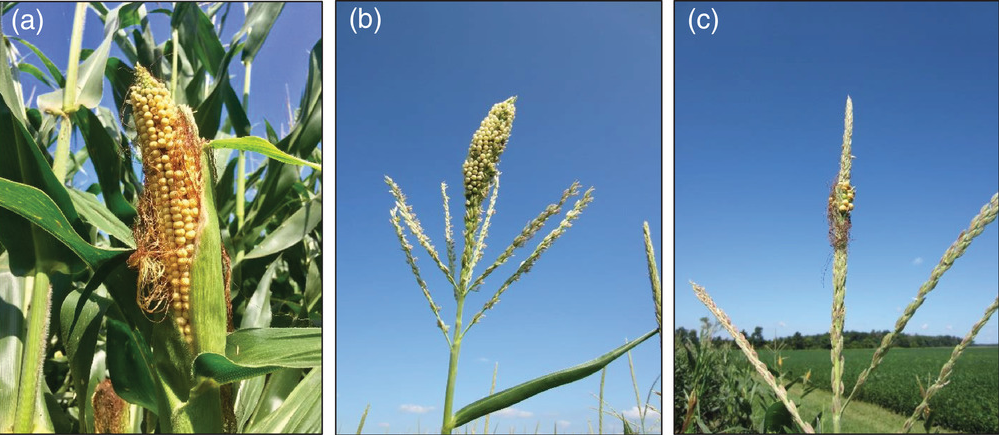Abstract
Intensive study for more than 100 yr has resulted in a good understanding of corn’s (Zea mays L.) growth and development. However, abnormal development of ears in corn was reported in several U.S. states, including Texas, Colorado, Kansas, Nebraska, Iowa, and Illinois, during 2016, stretching our understanding. A comprehensive review of the literature was conducted to identify abnormal ears’ symptoms, causes, and timing of development. This study aimed to (a) describe and summarize previously reported ear symptoms, (b) document recent widespread symptoms of major concern, and (c) describe our current understanding of the potential cause(s) and expected development timing for abnormal ears. In total, 10 previously reported symptoms of corn ears were found, including tassel, fasciated, arrested, pinched, blunt, silk-balled, incomplete kernel set, banana-shaped, zipper, and tipped-back. Three additional recent widespread symptoms of major concern associated with significant yield reduction across a wide area in 2016 were described: multi-ears, barbell-ears, and short-husk ears. The information available on several of the symptoms was limited, and the specific causes were unknown, highlighting the need for more research in this area. Despite this and based on existing knowledge, possible causal factors and postulated development timing (i.e., when the stress may have occurred) are presented for all symptoms. Abnormal ear development can be seen as the response to complex interactions among genetics, environment, and management practices. Ear abnormalities are detrimental to grain yield and quality, and their mitigation is imperative to efficient corn systems, crop resiliency, and sustainability.



